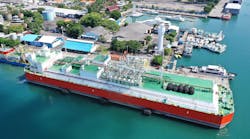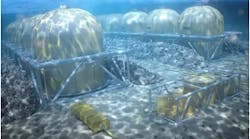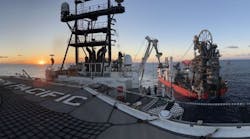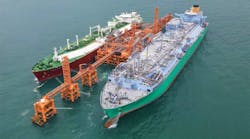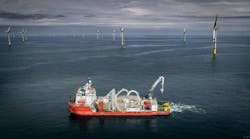Editor's note: This story first appeared in the May-June 2023 issue of Offshore magazine as part of the Remote Inspections & Operations Special Report.
By Matt Tremblay, ABS
The FPSO fleet is in the midst of a generational shift in the technology available to support offshore operations. For 50 years, maintenance management and condition evaluation have been a labor-intensive, analog exercise.
Today, a new technology-driven agenda is enhancing a safety-first approach with the adoption of tools and systems that improve safety, performance and operating costs.
Following the launch of the recent ABS "Guide for Autonomous and Remote-control Functions," which sets out a goal-based framework for the implementation of these technologies on vessels and offshore units, a new project is underway to advance safety performances of a global FPSO fleet.
Remote-controlled FPSOs
An FPSO operator has proposed to add remote control functionality to their newly installed FPSO, which is under ABS class. The FPSO is currently located offshore in a new and rapidly developing area that has challenges with local resources and transportation infrastructure.
The proposed plan is to add a remote control center called an Integrated Operation Center (IOC) located at a nearby shore-based facility to add remote control functionality. The FPSO will be connected to the IOC via fiber-optic cables with redundant capability. A small crew would also remain on the unit to serve as oversight.
This initiative by the FPSO operator is to add remote functionality to all topside process-related functions and large equipment packages such as turbines, compressor, generators, etc. However, the work scope does not presently include plans to control the typical marine systems or marine operations such as stores transfer, station keeping and bunkering via the IOC.
The project will be executed in three phases. Phase 1 will use remote monitoring to verify all systems are working as they should and that there are no major problems. In Phase 2, the operator will gradually add remote functionality for selected modules and equipment packages. In Phase 3, remote functionality to all topside modules, system and equipment packages will be implemented. The scope covers both hardware and software digital architecture assessments and cybersecurity risk assessments and management system.
The work is based on ABS’ recent guidance and cross-industry collaboration on remote control and autonomous notations. Development of this guidance was informed by experiences with rocket launching and recovery vessels as well as remote control and autonomous tug projects in Europe, Asia and the Americas.
The goal-based framework covers interactions with relevant stakeholders such as port authorities and other vessels. It uses a risk-based approach to determine the requirements for the assessment and implementation of autonomous and remote control functions.
Autonomous functions are those in which machines perform each of the four steps in the operational decision loop (i.e., monitoring, analysis, decision and action), without the need for human intervention to perform tasks and achieve the system mission.
Autonomous functions do not follow predefined routines and operational scenarios. They have the ability to execute the most appropriate actions based on their programming, assigned mission and tasks, operational environment and the system status.
Remote control functions are an approach whereby the system and operation being monitored is controlled remotely by a human operator who is physically located elsewhere other than on board a marine vessel or offshore unit where the operations take place. There is a minimal crew on board for oversight and emergency operations.
Asset inspections
The FPSO project is just one of the many growing examples in which the offshore industry is rethinking the methods to conduct asset inspections, collect and evaluate condition data, reduce costs and increase safety, while ensuring reliability. ABS experts can also explore with their clients the latest artificial intelligence tools used to aid in corrosion detection and measurement and the potential of an accurate digital condition model, or digital twin, to support modern risk-based inspection techniques.
For this project, ABS will dedicate locally assigned survey teams and other ABS experts. ABS surveyors will perform the duties required for classification surveys, and a training program is being implemented for the client’s technical teams to ensure the technical staff remain qualified and to ensure the work is done in a safe and consistent manner.


